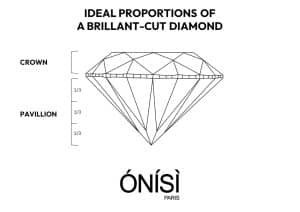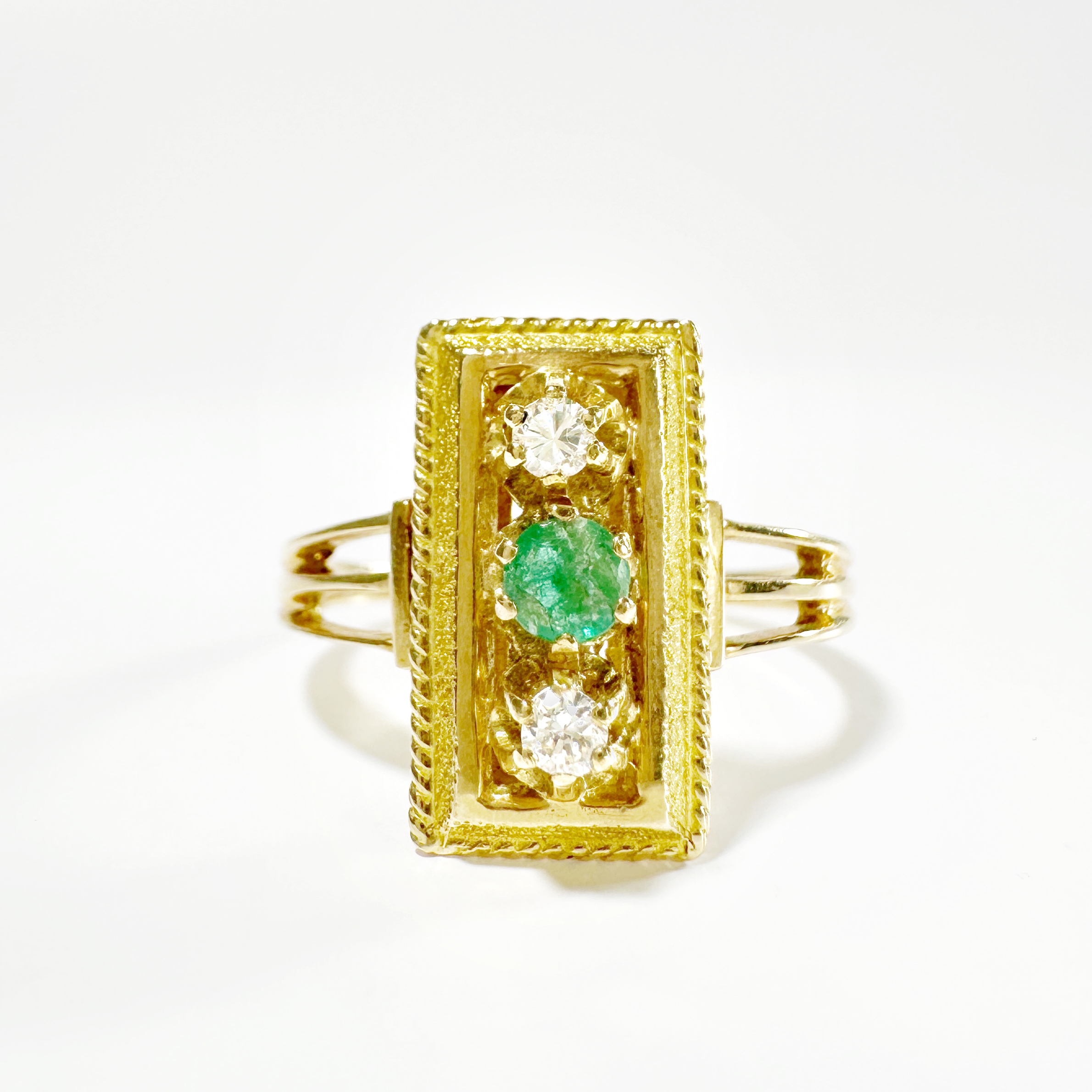 When it comes to jewelry, there is a gem that fascinates more than any other: the diamond. Like jewelry, the latter has evolved enormously over time, with the evolution of styles but also technology. If we were talking about contemporary jewelry, the discourse around diamonds would focus on the 4 Cs for Carat, Color, Clarity and Cut. When it comes to antique jewelry, on the other hand, it is worth focusing mainly on the cut (cut) because the latter is indicative of the time and history of the iconic gem. Let’s dive in!
When it comes to jewelry, there is a gem that fascinates more than any other: the diamond. Like jewelry, the latter has evolved enormously over time, with the evolution of styles but also technology. If we were talking about contemporary jewelry, the discourse around diamonds would focus on the 4 Cs for Carat, Color, Clarity and Cut. When it comes to antique jewelry, on the other hand, it is worth focusing mainly on the cut (cut) because the latter is indicative of the time and history of the iconic gem. Let’s dive in!
CONTEMPORARY DIAMONDS AND THE BRILLIANT CUT
Before going back in time and talking about antique diamond cuts, it is worth laying the foundations of modern diamonds. There are many popular shapes of the precious gem. Each cut affects the overall appearance of the stone. Nevertheless, proper cutting will guarantee the value of the stone regardless of the chosen shape . However, here we will focus on the brillant cut since it is the most popular shape nowadays.
In order to facilitate the understanding of the subject, we will refer to the diagram opposite which gives the “anatomy” of a the gem.
A modern brilliant round cut diamond has 58 facets. It has 33 on top, 24 on the bottom. The culet, or the “tip” of the bottom, adds to these facets. Nowadays, many of this rare gem are cut without culet.
Small stones cut in a brilliant circle are said to be “full size” to distinguish them from diamonds 8X8 or “single cut“, which have 17 facets, 16 /16 or “Swiss Cut”, which have 33. This is the case with many antique versions of the gemstone.
THE PROPORTIONS OF A BRILLIANT DIAMOND
 The brilliant cut is the most popular because it is the one that offers optimal shine. Indeed, this shape allows a greater amount of light to circulate in the stone and be reflected. This is made possible by modern technologies (lasers) that make it possible to cut the hardest gemstone with absolute precision and ideal proportions, something that was impossible with antique diamonds cut with manual tools.
The brilliant cut is the most popular because it is the one that offers optimal shine. Indeed, this shape allows a greater amount of light to circulate in the stone and be reflected. This is made possible by modern technologies (lasers) that make it possible to cut the hardest gemstone with absolute precision and ideal proportions, something that was impossible with antique diamonds cut with manual tools.
 Finally, we can remember some notions to establish that a modern brilliant-cut diamond is considered to have optimal proportions. It is necessary that the upper portion of the stone (the crown) seems more or less equal to a third of the depth of the pavillion (distance from the girdle to the culet).
Finally, we can remember some notions to establish that a modern brilliant-cut diamond is considered to have optimal proportions. It is necessary that the upper portion of the stone (the crown) seems more or less equal to a third of the depth of the pavillion (distance from the girdle to the culet).
Now, let’s discover the most common ancient diamond cuts, from the oldest to the most recent.
 THE TABLE CUT (BEFORE 15th CENTURY)
THE TABLE CUT (BEFORE 15th CENTURY)
The table cut illustrates the very first effort at cutting the precious gemstone in history. They were cut by placing the tip of the gemstone’s crystal against a rotating wheel with another diamond in order to wear out the tip. This created a roughly square flat surface resembling a table top. Today we still call “table” the flat facet that is on top of the stone.
THE ROSE-CUT (XV-XVIth CENTURY)
The rose cut diamond was cut manually during the period from the fifteenth to the sixteenth century. This size usually has a flat base and facets radiating from the center. This size usually ranges from 4 to 20 facets, giving the appearance of a rosebud which is opening. The rose cut appears in round, oval and pear shapes.

THE “OLD MINE” SIZE (XVII-EIGHTEENTH CENTURY)
The antique cut called “old mine” is the precursor of the modern round cut. It is named after the first mines of the precious stone discovered in India and Brazil. Around 1870, the mines of South Africa were discovered. Therefore, the other mines were retroactively referred to as “old mines”. This cut consists of a cushion shape, i.e. a square with rounded edges. The crown is higher and the pavillion deeper than in modern stones. The table is very small, the culet is very large and easily visible from the top of the stone. This gives the effect of a “hole” when looking at the gemstone from above. They may lack the brilliance of modern stones but they have exceptional fires.
 THE EUROPEAN CUT (19th CENTURY)
THE EUROPEAN CUT (19th CENTURY)
Appearing in the mid-1800s, the European cut is similar to the Old Mine size except for its shape. This diamond is round rather than cushion shaped, and it has 58 facets. The crown is higher than in modern sizes, and the pavillion is deep, but not as deep as in the old mine cut. The culet is still open but smaller than in the old mine size (as seen here on the bottom line, the view from underneath the stone).
COMPARISON WITH MODERN DIAMONDS
Given the vast technological gap between table cut diamonds and their modern counterpart, it would not make sense to compare them. It would be similar to comparing a hand-painted artwork and a digital photograph. On the other hand, we can compare an old mine cut diamond and a European cut with the same criteria as modern diamonds. We will therefore look at the color, purity and weight of the stone if it had been cut today. However, it is not recommended to resize antique gemstones if they are set in beautiful original antique frames. Indeed, it would decrease the overall integrity of the piece and therefore its value.
A NOTE ON THE GRADING OF ANTIQUE DIAMONDS
 In addition, regarding the 4 Cs grading, it is important to note that any reliable evaluation of a gemstone must be done on loose unset gemstones, viewing the gems at 90 degrees over a white background. Indeed, the color of the setting will affect the evaluation of the clarity and the color, especially if it is set in yellow gold. Estimating a gemstone on an antique jewel while it is set is therefore to make an approximate evaluation. Yet, unsetting a piece of antique jewelry may cause damage, so it is to be done by experts only. Note that this grading issue does not arise in modern jewelry since the stones are evaluated before being set.
In addition, regarding the 4 Cs grading, it is important to note that any reliable evaluation of a gemstone must be done on loose unset gemstones, viewing the gems at 90 degrees over a white background. Indeed, the color of the setting will affect the evaluation of the clarity and the color, especially if it is set in yellow gold. Estimating a gemstone on an antique jewel while it is set is therefore to make an approximate evaluation. Yet, unsetting a piece of antique jewelry may cause damage, so it is to be done by experts only. Note that this grading issue does not arise in modern jewelry since the stones are evaluated before being set.
To conclude, at ÓNÍSÌ PARIS, we will emphasize that the growing popularity of antique stones and more specifically, antique diamonds, is based on their rarity. Indeed, all the sizes previously mentioned are no longer created. They are therefore difficult to find, and very unique. Because of their method of cutting with tools, they have a distinct personality, a character that distinguishes them from their modern version.
 en
en
 Français
Français




